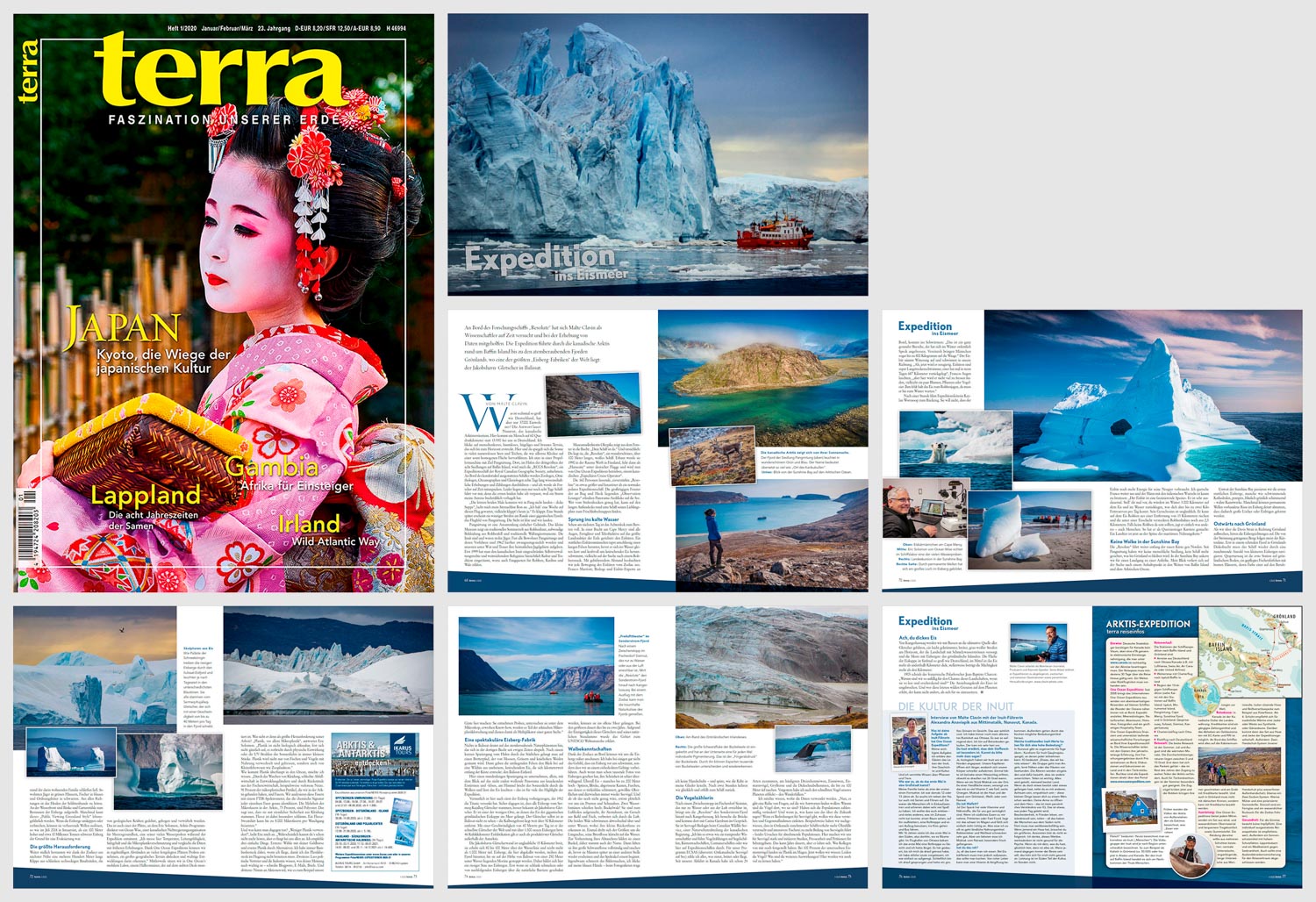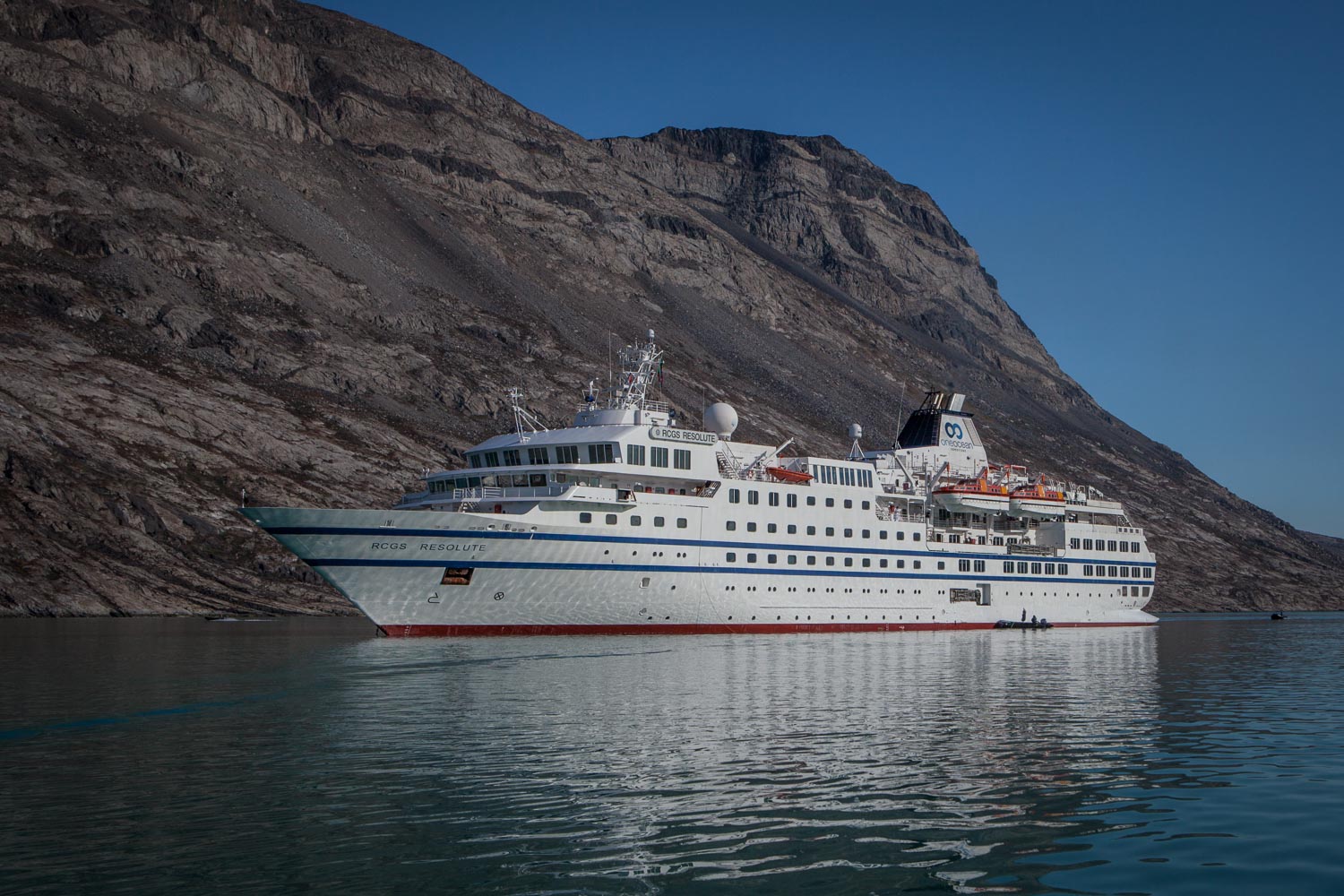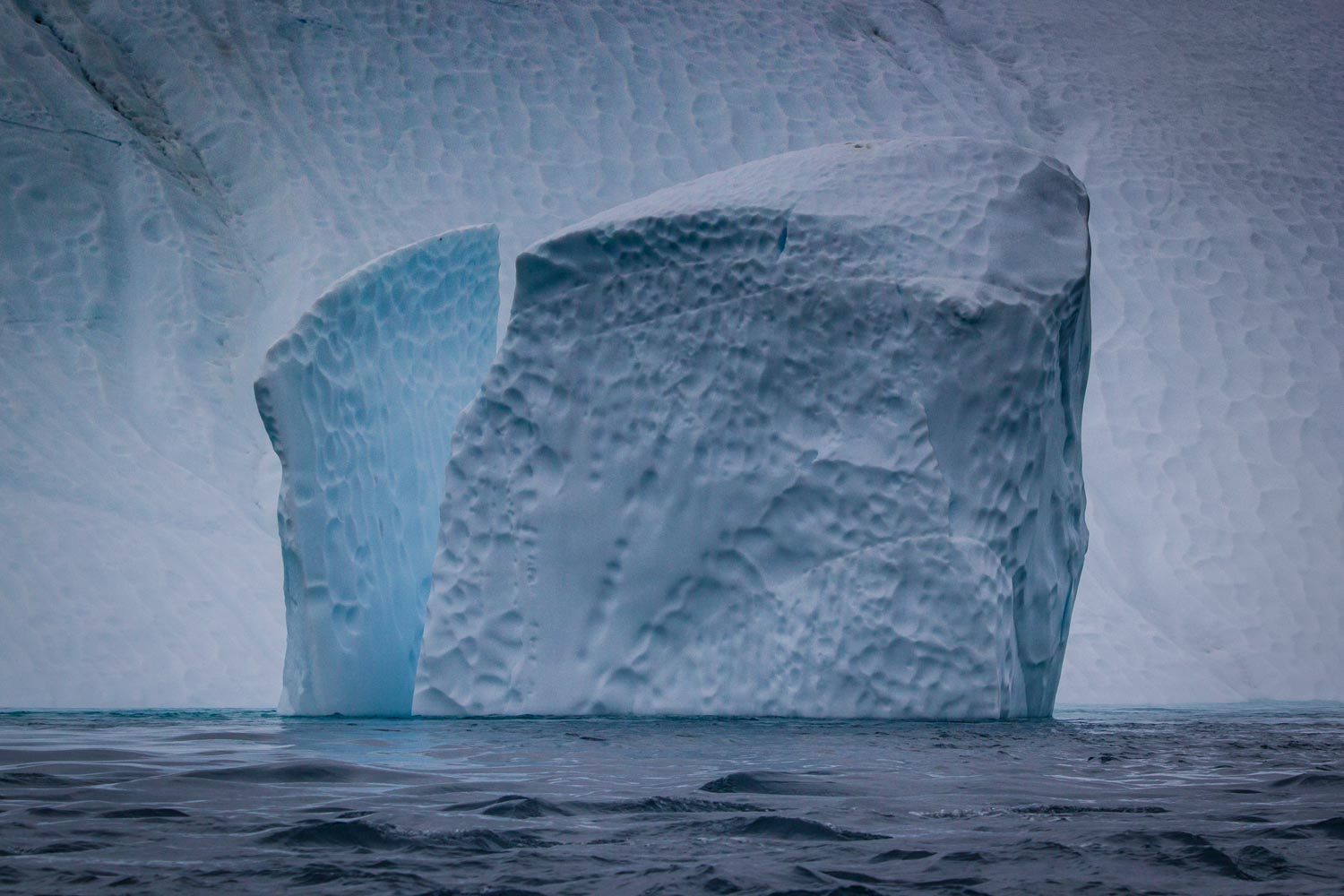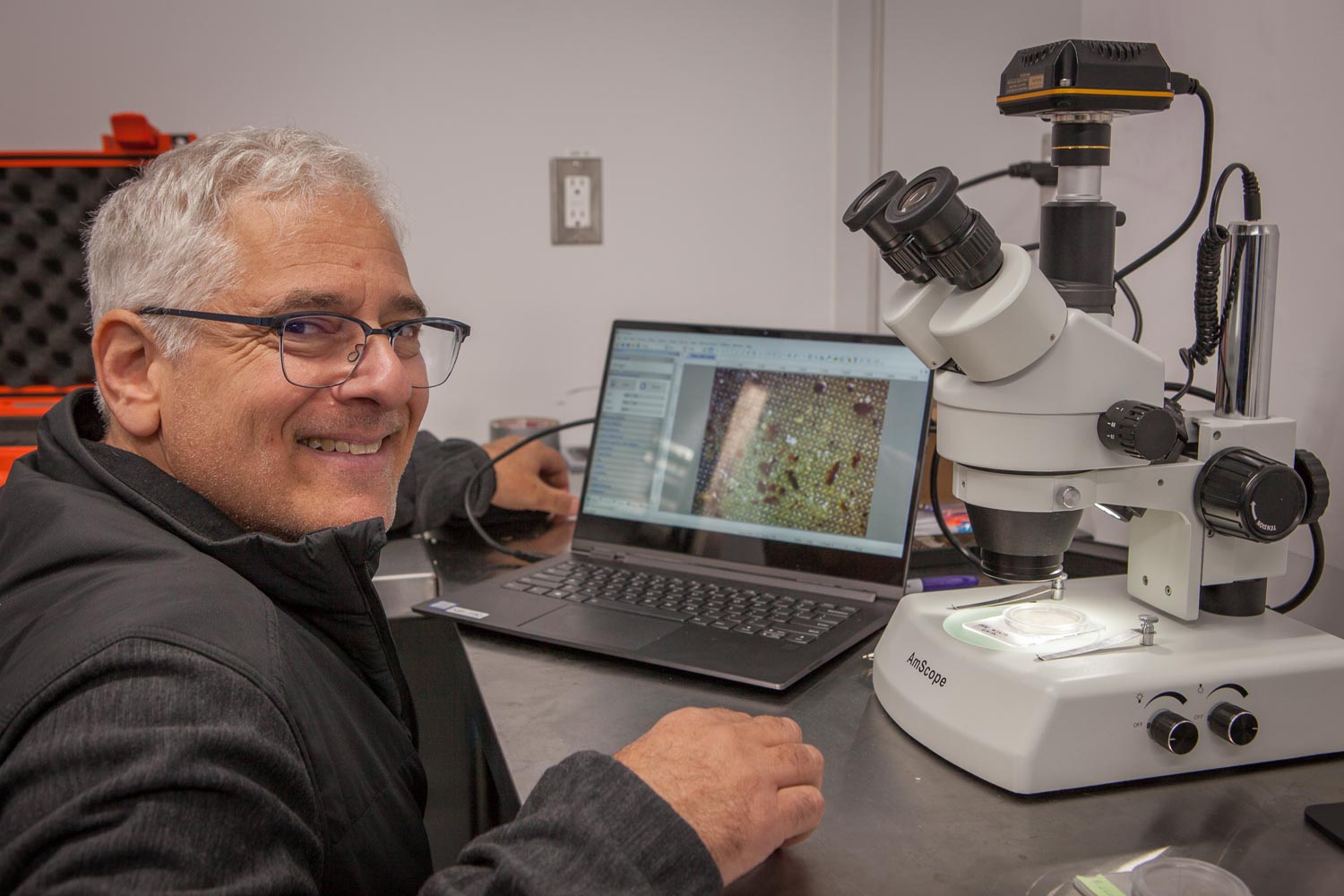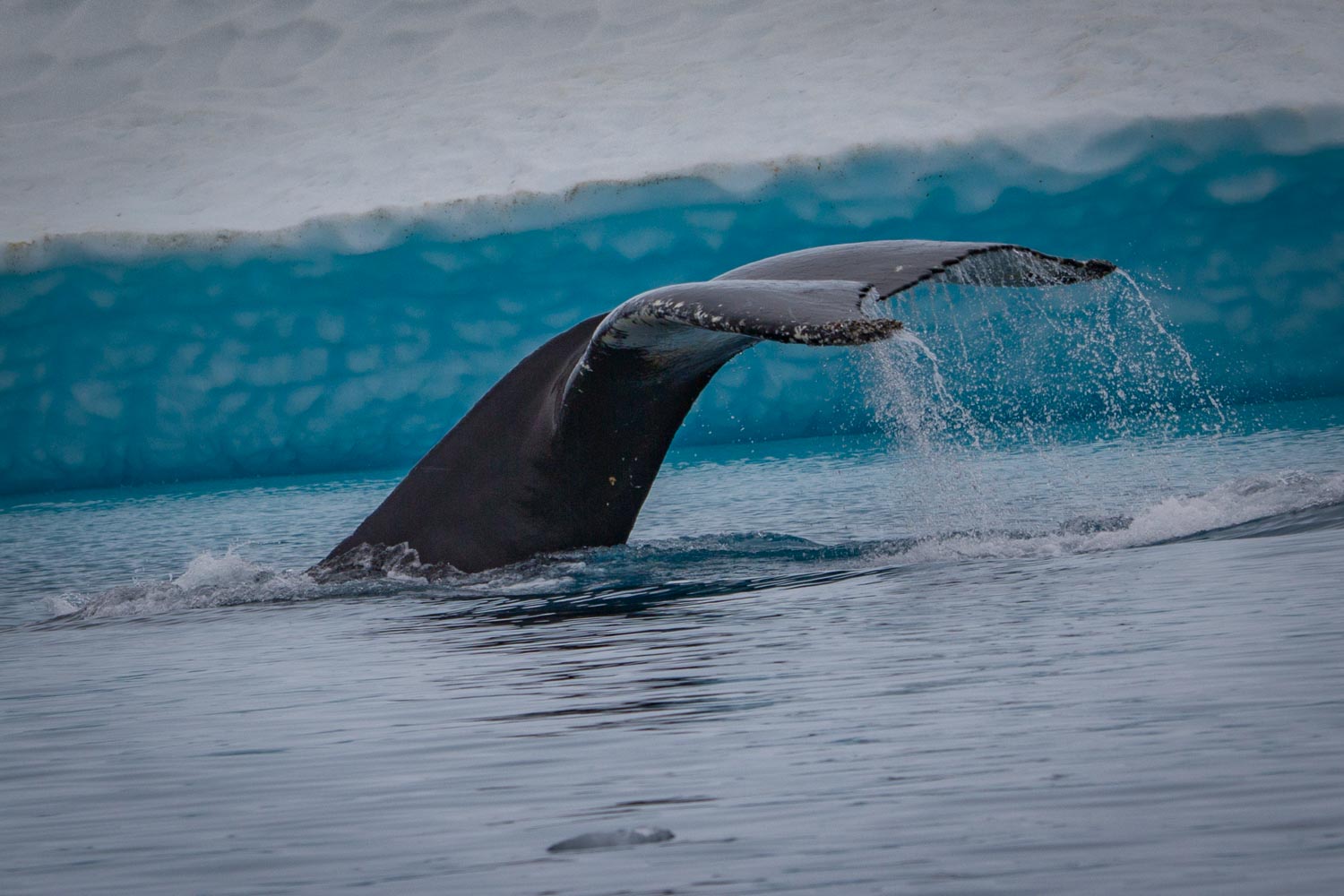Published in:

Germany’s biggest nature travel magazine
12 pages | text & photography
A ship will come
What is six times the size of Germany but has only 37,000 inhabitants? It is Nunavut, the Canadian Arctic Territory. Here, there is one person for every 60 square kilometres instead of 13,930 people like in Germany. I look out over deserted, treeless, hilly and brown terrain that stretches to the horizon. Here and there the sun is reflected on many unidentified lakes and ponds that flash out like specks on an otherwise homogeneous surface.
I am sitting in a propeller aircraft heading for Pangnirtung, where an expedition ship of the Royal Canadian Geographic Society will pick me up. I have only eight days of shipping ahead of me now, the first two I missed because a storm messed up my arrival.
“The last two times we couldn’t land in Pang. Pea-souper” my seat mate Ron laughs at me. “I’ve been waiting for this flight for a week, maybe it’ll work out today.” It does. An hour later, a tiny strip appears on the edge of a gigantic fjord: the Pangnirtung airfield. We have clear visibility and can land.
Pangnirtung is a collection of simple buildings. Shops sell carved soapstone and bone and hand-woven fabrics. The small museum displays a traditional seal-skin summer tent, elaborate seal-fur clothing and traditional whaling instruments. Inuit are and were proud hunters. Almost all the inhabitants of Pangnirtung and their ancestors were forcibly resettled here in 1962 and had to relinquish their native hunting grounds in anger and grief.
It was not until 1999 that Canada’s Inuit were granted limited self-determination and broader powers over culture and tradition, including fishing quotas for seals, caribou and whales. The dependence on the Canadian federal government is large, and the Inuit receive substantial subsidies.
From onboard the Zodiac we watch the polar bear’s every move at a safe distance.
Museum director Oleepika points out the window in the direction of the bay: “Your ship is over there.” And there she lies, the ‘Resolute’, a beautiful white ship over 100 metres long. Built in 1990 at the Rauma shipyard in Finland, she sailed under German flag as the ‘Hanseatic’ and is now operated by One Ocean Expeditions, a Canadian expedition cruise operator. The official ‘Programme Coordinator’ Boris Peresechensky ferries me aboard in a Zodiac, one of the 12 robust rubber expedition boats.
Now – after a 3 days journey from Germany – I can finally get started. The field trip takes us around Baffin Island via the Davis Strait all the way to Greenland, to follow the trail of the icebergs to their source, the large glaciers there. Additionally up-to-date scientific data will be collected by means of animal and plant censuses, as well as water samples taken.
The 160-passenger Resolute, with its ice-strengthened hull, is slightly larger and more luxurious than the usual polar expedition ship. The spacious windows of the ‘Observation Lounges’ located at the bow and stern allow panoramic views of the sea. Those who have had enough of sitting around, can get some fresh air and find their favourite spot on the long outdoor decks around the ship.
Taking the plunge
The very next day, the quarterdeck is jam-packed. In a bay at Cape Mercy, all eyes, binoculars and telephoto lenses are focused on the largest land predator on earth: the polar bear.
An imposing male polar bear plods somewhat indecisively down a barren rock before gliding into the water and swims powerfully around creaking ice, perhaps in search of a seal-snack. Now in summer, his hunting grounds have dissolved into the waters.
From onboard the Zodiac we watch the polar bear’s every move at a safe distance. Franco Marriott, biologist and polar bear expert on board, is excited: “This is a very healthy fellow, he has put on a lot of weight in the winter. Some males even weigh up to 800 kilograms.
“The polar bear picks up our scent and swims in our direction.”Ah, now he’s getting curious. Polar bears are super long-distance swimmers, one once covered 687 kilometres in nine days, ” Franco’s eyes light up, “but he won’t find much to eat here, maybe a few flowers, plants or bird eggs. He just doesn’t find the ice to hunt seals, so he’ll have to wait until winter. But he’ll make it through easily.“
The Resolute anchoring in the Sonderstrom Fjord.
After an hour, expedition leader Kaylan Worsnoop decides to turn around. She doesn’t want the polar bear to expend any more energy on his curiosity. I continue to grill Franco and the man with Italian roots can hardly be stopped: “The polar bear is a fascinating species.
It is tenacious. Imagine in winter covering 3000 kilometres on the ice and in the water, which will cost you up to 2 kilos of fat reserves per day. The polar bear is highly sensitive, its sense of smell is incredible. He can smell seals on the ice from a distance of 13 kilometres and the seal pups hidden under a layer of ice from 2.5 kilometres away. Seals are also his favourite food, with 80 to 85% of his diet consisting of ringed seals.
And he is very adaptable. If there are no seals, he simply hunts something else – including humans. So he has really made a career as a newcomer: a land animal is now at the top of the marine food chain.”
Canada is home to about 15,000 polar bears, or about 60% of the world’s estimated 26,000. The northern populations are considered stable, but the southern ones are vulnerable. This is because here in the warmer south, polar bears have to wait longer for winter to return. This has consequences. For example, the body mass of the much lighter female polar bears in the western Hudson Bay has declined from 287 kilograms to 237 kilograms between 1980 and 2007 – a decline of 17%. Better tidings came from northern Norway in early July this year.
On Spitsbergen, the important and age-independent health parameters on body dimensions and adipose tissue in male polar bears have remained the same for over 25 years.
Not a cloud in Sunshine Bay
The Resolute continues north along the wild coast. Since Pangnirtung we haven’t been able to make out a human settlement, or a ship, and it will stay like that until we come to Greenland. We anchor in Sunshine Bay to climb a hillock.
I peer into the distance in search of a landmark in the vastness of Baffin Island and the Arctic Ocean, to no avail. Back on the Zodiac on the beach, I spot dark brown leaves in the smooth water, swaying oddly in the current. Then I see them fluttering gently. They are living creatures, thecosomata, also called sea butterflies.
These delicate and stunning creatures are indicators for the acidity of the water. About a quarter of the carbon dioxide released into the atmosphere dissolves in the world’s oceans, making seawater acidic – a process called ocean acidification. It has been observed that this can cause the shells of sea butterflies to become thinner or even dissolve altogether. Here however, they appear healthy and alive.
Not far from Sunshine Bay we pass the first stately icebergs, some like floating cathedrals, pompous, gleaming bluish green, some of them true works of art that fill the sensitive aware observer with humility.
Some have rounded surfaces, suggesting that the water has worn away their undersides until they became top-heavy and toppled over, as can always happen when they drift south. Sometimes permanent waves can wear away existing cracks in the iceberg to such an extent that large holes or ice arches are formed as a result.
Sometimes this ‘Public Viewing Greenland Style’ can be life-threatening.
Eastwards to Greenland
As we set off across the Davis Strait towards Greenland, the iceberg sightings stop. These mountains, carried by the current, mostly drift along the coast. As the Resolute sails across the open sea and crosses the Arctic Circle, guests spend their time attending presentations on seals, talks by Inuit guides and classes on ship operations – given by Captain Hans Söderholm himself. The bridge is open to guests 24 hours a day.
On a narrow fjord in Disko Bay, the ship has to navigate through an increasing number of smaller icebergs to reach their source, the Equip Sermia Glacier.
We anchor at a cautious distance in front of the more than two-kilometre-wide wall of jagged white. The visitor encounters a very abstract and unsettling world here. There is no comparing the dimensions of these giants.
Qeqertarsuaq is the first stop on Greenlandic soil, a well-kept fishing village with colourful houses, the colour once indicating the profession of the people that lived there. Hunters lived in green houses, fishermen in blue ones and law enforcement officers in black ones. The howling of sled dogs can be heard everywhere.
Benches and garden chairs are set up along the waterfront to gape at the icebergs as they pass by in procession on their long journey to Canada. Sometimes this ‘Public Viewing Greenland Style’ can be life-threatening.
When the icebergs tip over or disintegrate, they can cause destructive waves, as was the case in Innaarsiut in July 2018, when a 100-metre-high iceberg weighing about 10 million tonnes led to an evacuation.
Beautiful ice forms in the Illulisat fjord.
Small but mighty
Further south, at close range, thanks to the Zodiacs, we marvel at a several-hundred-metre-long cliff of slender hexagonal basalt columns that have been stretched, bent and swirled by geological forces. This is also one of the places where Eric Solomon, Arctic programme director for Ocean Wise, a Canadian marine health non-governmental organisation, takes one of his many water samples during the expedition.
“I measure temperature, conductivity, salinity and microplastic pollution here and compare the data with previous surveys. Thanks to One Ocean Expeditions, we can sample at regular intervals in many of the same places, cover a large geographical area and identify important trends.”
Meanwhile we have settled in One Ocean’s mobile laboratory, a half-container mounted on the seventh deck. What does he see as the biggest challenge in his work? “Plastic,” he says, “especially microplastics. Plastic is not biodegradable, it doesn’t dissolve completely, it breaks into smaller and smaller pieces through physical impact or UV light from the sun. Plastic is mistaken for food and eaten not only by fish and birds, but also by micro-organisms like zooplankton.”
Eric shows me a slide of his presentation, “This is Neocalanus cristatus, a small shrimp-like zooplankton. In a study conducted by our researchers, one in thirty-eight of them had ingested microplastics. In Euphausia pacifica, which is almost three times larger, as many as one in seventeen had microplastics in their bodies.”
How does plastic get into the ocean in the first place, I want to know. “Through the washing of clothes, poor waste management in developing countries and refuse from the fishing industry, e.g. lost nets. 91% of the microplastic particles we found in the Arctic are fibres. We analyse these fibres with an FTIR spectrometer, which accurately identifies the chemical signature of each fibre. The majority of microfibres in the Arctic, 73%,are polyester. This tells us that they almost certainly derive from clothing. Fleece is particularly bad. A fleece sweatshirt can release up to 8,000 microfibres per wash cycle.”
And what can be done about it? “Use less plastic!” Eric smiles at me. “You probably don’t want to hear it any more, but it must start with all of us.
Throwing it away just means it disappears from sight – ‘gone’ is always a place.
I recommend three simple things. First, vote with your wallet and replace plastic with alternatives. I always carry bamboo cutlery when I fly so I don’t have to use the plastic cutlery on the plane. Secondly, let political representatives and industry know what is your concern – write blog posts, emails, letters. And third, take part in campaigns that can make a difference.
For example, what our guests are doing here. They take samples, examine them under the microscope, acquire know-how, become part of Arctic microplastic research and thus serve as a multiplier for a good cause. ” Eric’s enthusiasm is contagious. “We have to realise: Every piece of plastic that has been produced still exists somewhere. Throwing it away just means it disappears from sight – ‘gone’ is always a place.“
Eric Solomon of Ocean Wise in the ship’s laboratory triage the water samples.
A spectacular iceberg factory
Nothing in Illulisat hints at the breathtaking natural phenomenon that has been taking place in its bay for ages. A short walk from the harbour through the small town leads to a boardwalk lined with mosses, grasses and knee-high meadows. Then the surrounding rocks open up to a wilderness of uneven, groaning ice stretching for kilometres along the coast: the Illulisat Icefjord.
The hours-long walk, alone, with a never-ending panorama of crackling ice towers and ice boulders, bathed in sunlight at times intercepted by clouds, is for many the highlight of the expedition.
Rumour has it that the iceberg that sank the Titanic in 1912 once passed by here. What is certain though, is that all icebergs originate from the Sermeq Kujalleq Glacier, better known as the Jakobshavn Glacier. It is one of the few places where ice from the gigantic Greenland ice cap enters into the sea.
The glacier itself is not visible in Illulisat – the calving front is well over 50 kilometres away. With a speed of 40 metres per day, it is the fastest glacier in the world.
Nevertheless, the glacier as a whole is retreating. Global warming is to blame. From 1851 to the present, the glacier has retreated 37 kilometres, and 11.5 kilometres since 2001. Roughly calculated, that is 1.75 metres per day. These data seem paradoxical when you consider that this glacier alone produces 10% of all Greenland’s icebergs every year. With more than 1500 new icebergs or 46 cubic kilometres of ice per year, it is the most productive glacier outside Antarctica.
Rumour has it that the iceberg that sank the Titanic in 1912 once passed by here.
The Jakobshavn Glacier Wall is an incredible 15 km wide, rising 80 to 100 m above the waterline and reaching more than 1000 m deep. Icebergs broken off here drift down the fjord until they are blocked at Illulisat by a submersed moraine 250 metres underwater.
Therefore, a huge dam of icebergs piles up here. Only when they melt down or are pushed over the natural barrier by icebergs coming up from behind, can they reach the open sea. For larger ones, this can take up to two years. Due to the uniqueness of this glacier and its natural dam, the area has been declared a UNESCO World Heritage Site.
Whale acquaintances
Thanks to the Zodiacs on board, we can take a closer look at the icebergs. With some of them, I don’t even have the feeling that an iceberg is floating in front of us, but that we are navigating past an ice-covered mountain range. Even when you’ve seen thousands of iceberg photos, their sheer beauty is overwhelming.
Ice everywhere – sometimes up to 200 metres high – peaks, blocks, furrows, torn edges shining turquoise blue, curved surfaces and in between always seabirds. And if that were not enough, suddenly in front of us there are snorts, sniffs, two fountains of water: humpback whales! They have surfaced to catch their breath, their fumes, a smell of cabbage and fish, fills the air.
The two whales sometimes surface and then again slip below the waterline, only their small dorsal fin visible. At one point the larger one turns around its longitudinal axis, its pectoral fin slapping the water. In preparation for their descent, they form a hump, hence the name.
Then they raise their large tail fin in the air and dive down, before reappearing minutes later in a different spot and then the spectacle starts all over again. At some point taking pictures begins to hurt, I look down at my blue hands – I don’t wear gloves when taking pictures – and feel the cold creeping into my bones. After two hours we return to the ship, happy and fulfilled.
The large tail flukes of humpback whales are notched and have pigmentation on the underside that is unique to each whale. This is the fingerprint of the humpback whales. This allows experts to distinguish and recognise thousands of humpback whales.
The bird counter
After a stopover in the fishing village of Sisimuit, which can only be reached by ship or air plane, the Resolute takes us up the Sonderstrom Fjord to Kangerlussuaq. I visit the bridge and strike up a conversation with a woman there, armed with a headset, binoculars and a computer.
Carina Gjerdrum is a seabird biologist with the Canadian Wildlife Service, a conservation division of the Canadian government. “I’m something of a hitch-hiking scientist and conduct bird census on sailing ships, coast guard vessels, container ships or, like now, on expedition ships.
For our ECSAS programme (Eastern Canadian Seabirds at Sea), I count everything that nests, breeds or flies. Since leaving Canada, I’ve already tallied 24 species, most commonly the kittiwake, glaucous gull, fulmar, black guillemot and the thick-billed guillemot, which dives up to 100 metres. The day before yesterday I also spotted the fastest bird on the planet – the peregrine falcon.”
I want to know what the data is used for. “Well, there are a number of questions we want to find the answers to: Why are the birds where they are? Have the populations changed in numbers? Do seasonal factors have an effect? Why? And if so, what can they tell us about the future? If there are threats to seabirds, we want to understand them and take countervailing measures.
For example, we have shown that in eastern Canada, increased shipping traffic causes more oil spills and more intensive fishing leads to greater by catch of seabirds – both causes of declining populations. We take a stand for seabirds and initiate studies, do press work and petition for protected areas.
This can take years, but it is well worth it. What colleagues of mine have noticed as well: they found plastic in the stomachs of 100% of all the fulmars they examined. Now we want to know: are the birds suffering? Are there any other effects? This is where we will continue to make our contribution to ocean health and we still will have a lot to learn.”
Why are we so allured and enchanted by these landscapes when they are so empty and menacing?
Icestonishing
From Kangerlussuaq we are driven by bus to the ultimate source of all glaciers, a slightly curved, broad, grey-white strip on the horizon that supplies the area with meltwater streams and the seas with icebergs: the Greenland Ice Sheet. In the northern hemisphere, this ice is the only remnant of the last ice age. The oldest ice is estimated to be one million years old and provides scientists with detailed information about historical climate change and weather conditions.
The area of the ice cap is five times the size of Germany, and on average the ice is more than 1.5 kilometres thick; in some places it is even more than 3 kilometres thick. The melting of all ice would cause the world’s oceans to rise by 7 metres.
At the moment it amounts to 273 billion tonnes per year – that is three times as much as in 1996. By comparison, almost 50 billion tonnes of water flow into Lake Constance. And Greenland’s ice sheet‘s shrinking is accelerating. In all, since 1972 the melting of the ice has led to a sea level rise of 1.37 centimetres, half of it in the last 8 years. At the current rate, it would take almost 9000 years for the ice cap to completely disappear.
The last time the Arctic was significantly warmer for over a longer period of time, the melting ice led to a sea level rise of about 5 metres. However, that was 125,000 years ago.
But the chain of causes, evidenced by findings from historical ice ages, is still valid in 2019: CO2 rise leads to temperature rise, leads to melting ice, leads to sea level rise. And quite simply put: only if we succeed in minimising carbon dioxide emissions can we limit global warming and its effects.
In 1905, the French polar explorer Jean-Baptiste Charcot wrote: “Why are we so allured and enchanted by these landscapes when they are so empty and menacing? “Fascination for the world of ice is undiminished. And anyone who has ventured into these last wild frontiers on the planet cannot help but stand up and defend them.
Read now:
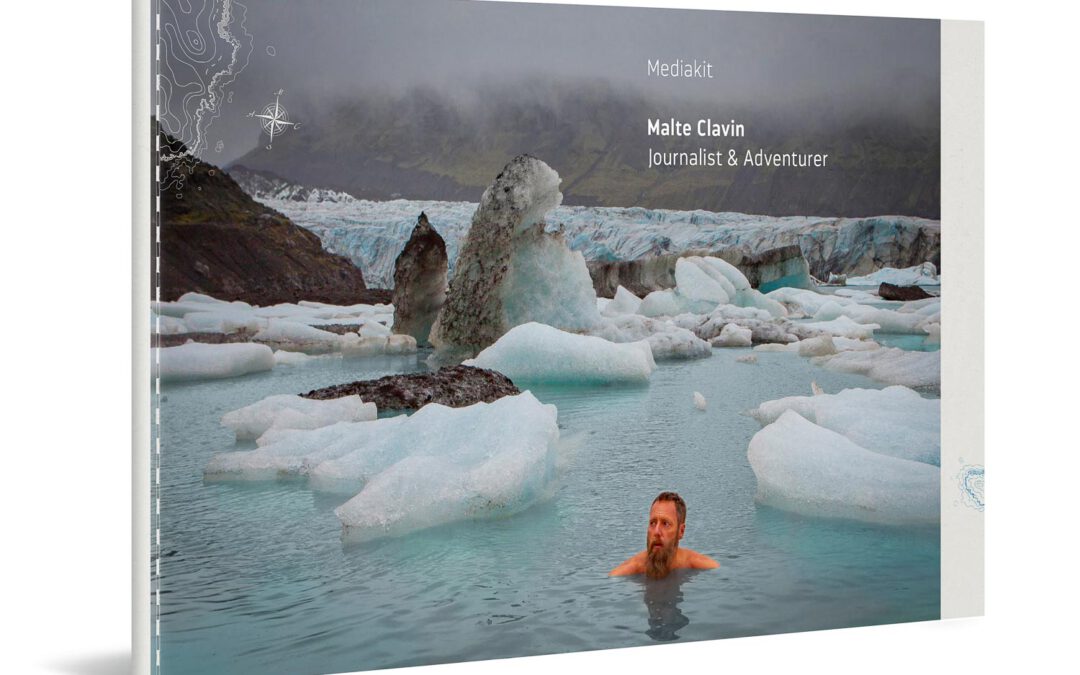
Pure inspiration
My new media kit 2025
< 1 Min.In this brand new 28-page media kit, I show you my work as an adventure journalist and speaker: Expeditions, travels, challenges – everything that excites me. Let yourself be inspired.
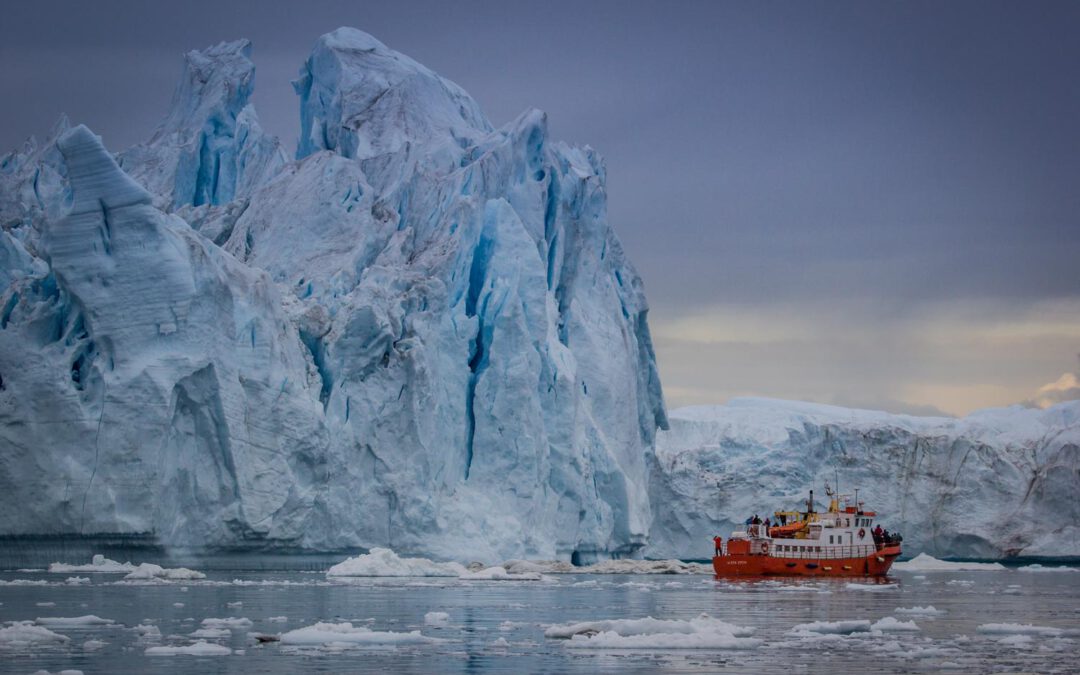
With scientists on board
Arctic photo gallery
< 1 Min.On board the ‘Resolute’, a comfortably equipped ship under the flag of the Royal Canadian Geographic Society, zoologists, ornithologists, oceanographers and glaciologists will conduct scientific surveys and counts over the next 10 days. And in the middle of it all, me, as a ‘temporary researcher’.
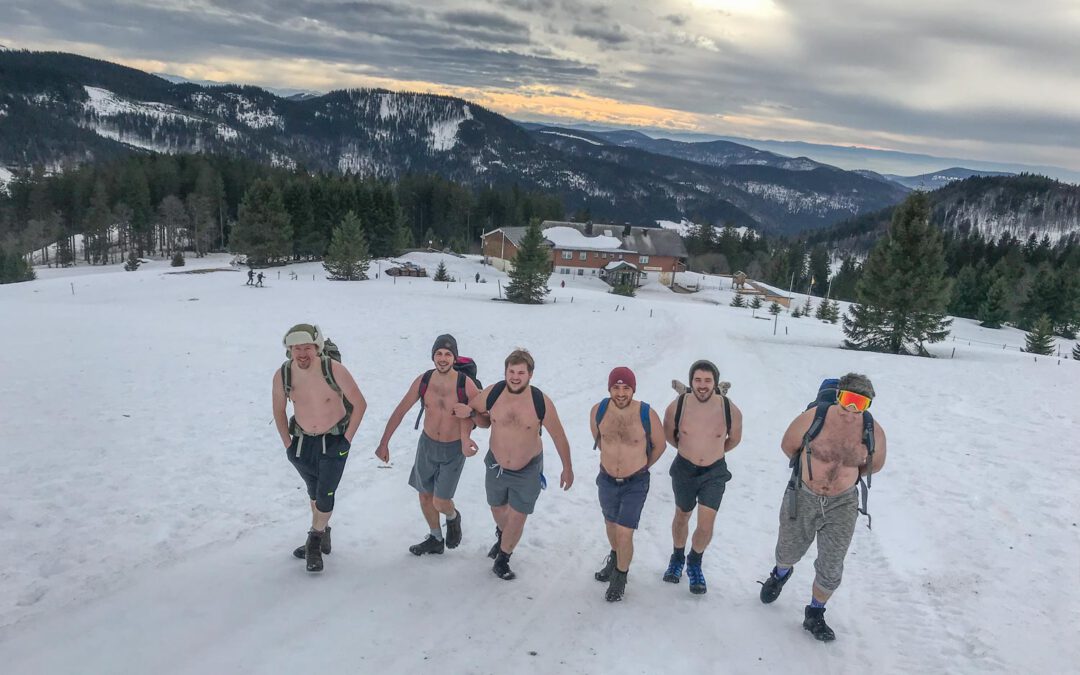
Article in the Badische Zeitung
Topless on the Feldberg in winter
9 Min.January 2018, Black Forest, Southern Germany: Together with my Ice Buddies I wad through knee-deep snow, jump into ice-cold lakes and finally boot up the snow-covered Feldberg. All topless, mind you. So what’s it about?

